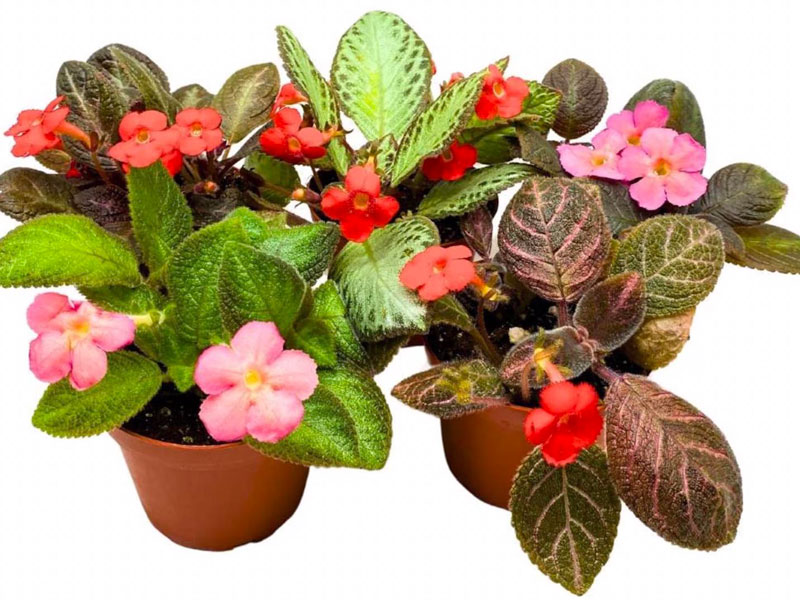Pretty Little Plant You Probably Don’t Know

Here’s a plant that’s native to the Tropical Americas, yet most gardeners have never grown it. Some who have grown it say it’s easier than its cousin, the far better-known African violets. Others of us admit that episcias can be challenging, but their beauty makes them well worth the effort.
First, let’s learn about them…
Episcia is a genus of tropical herbaceous (non-woody) trailing perennials that includes about 10 species.
Their flowers range from reds, oranges, yellows, pinks, lavenders, blues, and whites. In spite of all that variety of floral colors, many enthusiasts grow them just as much for their beautiful foliage. It can be bronze, green, or silvery, often mottled and marbled.
• Size. Episcias are small plants, growing to 5-6 in. tall and spreading by runners to 10-14 in. wide or wider.
• Containers. They grow well in 6- or 8-inch pots or small hanging baskets.
• Potting soil. Highly organic, with 75 percent sphagnum peat moss, 15 percent perlite, and 10 percent expanded shale. Basically, you’d use the same mix you’d use for African violets.
• Moisture. This is critical. Episcias do not tolerate drought or low humidity. Keep their soil moist (but not soggy) at all times. Keep them out of hot drafts of forced air heating. Keep them away from fireplaces. They’re happiest in shaded greenhouses, in terrariums or beneath large glass cloches, all to maintain humidity.
• Fertilizer. Use a standard houseplant food at half the recommended rate monthly during the growing season. Leach the soil regularly to prevent accumulation of mineral salts.
• Temperature. Episcias prefer temperatures cooler than most other tropical houseplants (65-75F.).
• Lighting. As with African violets, episcias need bright indirect light (no direct sunlight). Place yours in a bright north or northeast window, but far enough away that cold winter temperatures won’t cause any problems. They can also be grown alongside African violets beneath artificial lighting stands so long as the light is bright and close to their leaves.
• Propagation. Episcias are started from cuttings from runners that have begun to exceed their available space. Young plants are found at the ends of the runners. Carefully clip them away and place them into small pots that you can carefully tend until they are large enough to repot into the final pot sizes.
• Sources. Occasionally better nurseries will offer Episcias mixed in with other tropical plants, often with collections of African violets and other Gesneriads.
However, if you want to cut right to the chase, I was amazed at the large numbers of growers on Etsy and eBay. I’ve had good luck with the latter, but I’m a newbie in buying plants from sources on Etsy. My hard goods purchases from Etsy have always been good, so I may take the plunge once it gets a bit warmer.
So I’ve now told you everything I know about Episcias. Maybe a little more! Have fun with them and report back in a few months.




